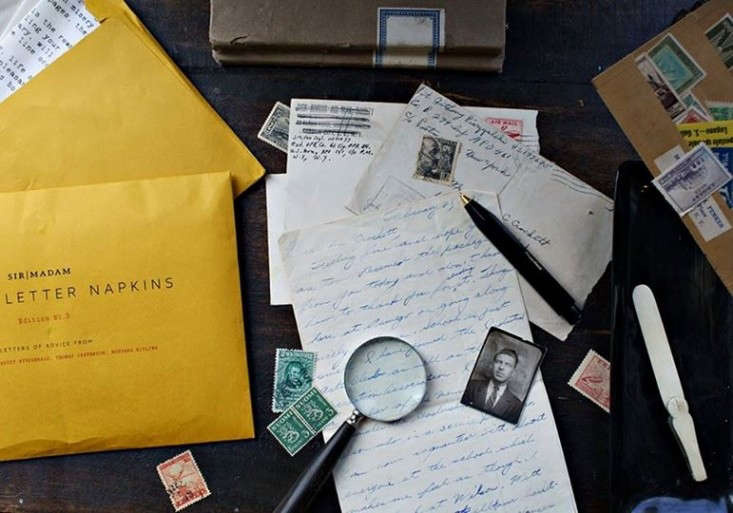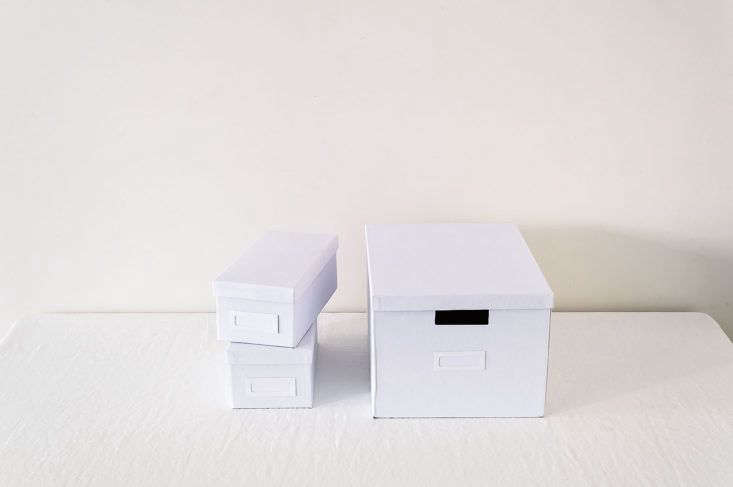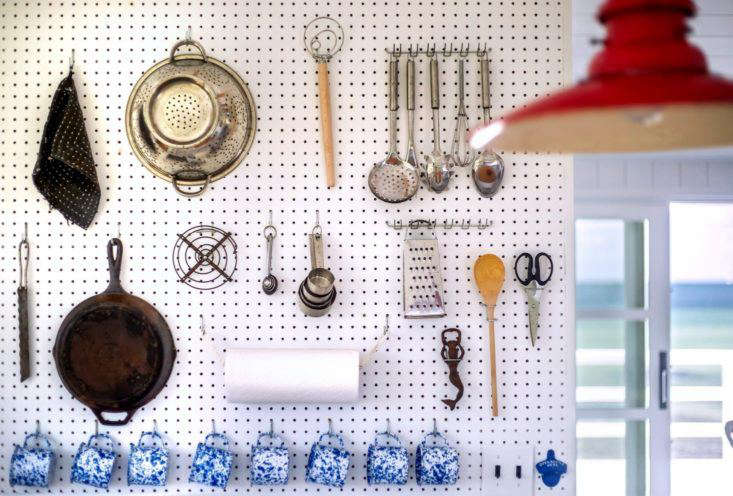
Everything about Marie Kondo is magically tidy, down to the storage and organizing expert’s website where neat instructions invited me to contact her but warned: “At this time, we cannot answer personal questions about your tidying.” I would have to get around that.
Putting some of my questions on the back burner—is it time to toss my college-age daughter’s wisdom teeth and do I really need 11 black sweaters?—I bravely forged ahead. “At Remodelista, we’ve launching a new companion website to Remodelista and Gardenista and we would love to interview you for a story for The Organized Home,” I typed, shaking off a black turtleneck that was crawling up my leg. “If there is a convenient time, please let us know—we’ll arrange our schedule to suit yours.”
Perhaps Ms. Kondo sensed the urgency. She responded within days and was polite enough to overlook one to three personal questions I may have included in the mix. In her latest book, The Life-Changing Manga of Tidying Up, her tips are graphically illustrated. Here are nine organizing secrets she shared with us:
1. Embrace Your Future
The biggest obstacle that keeps us from organizing our homes? “I have thought a lot about this as I helped many clients tidy, and came up with this answer—if we delve into the reasons for why we can’t tidy or let something go, there are only three: an attachment to the past, a fear for the future, or a combination of both,” says Ms. Kondo. “Whether it manifests in an attachment to a piece of clothing or sentimental item, those are the underlying psychological barriers people face when tidying.
“The key to overcome this obstacle is to ask yourself why it is difficult to let go of something, and understand your ownership pattern,” she says. “Do you tend to keep items from the past for fear of losing a memory, or are you prone to keeping things that function but that you don’t like, because you are scared you won’t be able to find a replacement? Once you understand your patterns, it becomes easier to face your fears and attachments.”
2. Don’t Confuse Mementos with Memories

Some people save mementos and scraps because they are afraid they will lose history if they get rid of them. So attics and basements are full of boxes of paper and scraps. But, says Ms. Kondo, “There is no need to worry. Truly precious memories will never vanish even if you discard the objects associated with them.”
But too many possessions can bog you down. “Keeping mementos of things that you would otherwise forget can keep you from moving onto the future,” she says. “No matter how wonderful things used to be, we cannot live in the past. You should live for yourself, not for a future stranger or your past self. I believe that the joy and excitement we feel here and now are more important.”
3. You Are Your Closet

It’s easy to organize a space, not so easy to keep it organized. Clutter-free closets have a way of getting messy over time. So how do you maintain an orderly home after you’ve organized it?
“I advise anyone looking to organize their homes to begin by thinking what their ideal way of living is. After you have a clear picture of this ideal, you can start to achieve it. Having the ideal lifestyle pictured in your mind can curb your impulses to purchase unnecessary items, and help you keep only what you need and love.”
4. You Don’t Need a Storage Unit

Not sure if this qualified as a personal question, but after Remodelista editor in chief Julie Carlson recently moved from California to New York City and went through months of sorting, storing, and unpacking her possessions, she wondered if there were tips for simplifying the process?
“If you haven’t moved yet, my advice is to go through the KonMari Method as described in The Life-Changing Magic of Tidying Up and finish tidying,” says Ms. Kondo. Get rid of possessions you don’t want or need before you move is preferable to finding yourself overwhelmed after you’ve arrived in your new home.
Rule of thumb: If you’re putting a possession in a long-term storage unit, you probably don’t need it (and in a few months won’t even remember that you own it).
5. Use Boxes in Drawers

“Simplifying your storage can also ease the moving process,” says Ms. Kondo. “For example, if you use a box inside a drawer to store your things, you can simply put it in the moving box without separately packing its contents.
Bonus tip: “If you have already moved and find yourself surrounded by clutter, going through the KonMari Method, once again, can help you tidy up. Right after you have moved is a great chance to redo your storage entirely as well,” says Ms. Kondo.
6. Avoid Plastic

Some substitutes: cardboard boxes, enamel tins, trays, shoeboxes, and wooden crates.
7. It’s OK to Buy a Better Version

We agree with Ms. Kondo that possessions should spark joy and wondered if her philosophy also covered a prosaic possession—such as a dust pan or broom—that may be serviceable but gives you no pleasure? In other words, is it OK to replace something you own with a beautifully designed version that will give you pleasure to use?
“Everyday possessions such as cleaning supplies are necessary to keep our homes clean and make our lives convenient,” says Ms. Kondo. If they don’t spark joy, if you do decide to let them go and purchase a new one, that’s completely fine as well, but I would also advise thanking the old items before doing so for all their work.”
Before giving away unwanted possessions, “I advise people to first shower them with praise for making our lives run smoothly and doing the work they do, just as with your other items,” says Ms. Kondo. “This may feel quirky, but taking a moment to thank them can renew your sense of appreciation for each item in the home.”
8. Never Underestimate a Shoebox

Things to store in shoeboxes: “You can store in them socks and stockings, t-shirts and camisoles, stocked food in the kitchen, cleaning supplies in the bathroom, and so on,” says Ms. Kondo.
9. Forgive Yourself

“When I was in high school, I threw out my family’s things without telling them. I got rid of my mother’s bag and my father’s suit and got into huge trouble. I do regret doing that!” says Ms. Kondo.
Ms. Kondo’s new book, The Life-Changing Manga of Tidying Up (available in paperback for $11.33 at Amazon) offers readers who already have read her previous books instructive illustrations of her methods of tidying up. The project began when Yuko Uramoto, a manga artist, contacted Ms. Kondo via Twitter (in Japan, it is not unusual to publish a manga version of a best-selling book).
Ms. Kondo recently launched an online course; Tidy Up Your Home: The KonMari Method includes a 1.5-hour on-demand video and is $60.
For more advice on decluttering, see:






Have a Question or Comment About This Post?